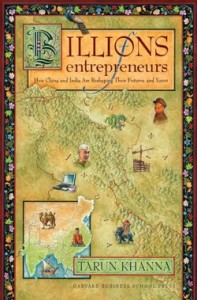“Noise-free & Biased” vs. “Noisy & Unbiased”. Which is better?
 Comparing China and India for the BBC program Global Business, Harvard Professor Tarun Khanna described information flow in China as “noise-free and biased” vs. “noisy and unbiased” in India. Both approaches have their advantages and drawbacks, so I started thinking about these advantages and drawbacks as they apply to business.
Comparing China and India for the BBC program Global Business, Harvard Professor Tarun Khanna described information flow in China as “noise-free and biased” vs. “noisy and unbiased” in India. Both approaches have their advantages and drawbacks, so I started thinking about these advantages and drawbacks as they apply to business.
For China, the main advantage is control over the message, but the disadvantage is a loss of control over the conversation that takes place after the message has gone out. As a result, even positive actions taken by the government are likely to be met with skepticism and ambivalence. Since messages can be misunderstood and misconstrued, being involved in that conversation is critically important to helping people understand the intent of your message.
For India, Khanna notes the noisy culture means that, “every version of every event is there in all it’s glory, you have access to all the points of view and nobody is wantonly misrepresented, and no one is preventing anybody else from saying anything.” It may be difficult initially to make sense of all the noise, so honing an ability to “listen” for the most relevant information is a critical skill in noisy environments.
Abundance is better than dearth of information, because it presents an opportunity to develop tools to help sift signals from the noise. That’s a much better problem to have than the lack of opportunity when there’s little to no information available.
The rapid growth of information in recent years has sparked innovation in the form of blogs, wikis, RSS, and other tools whose chief purpose is to filter, organize, and effectively use this information. Even though a tool like a wiki could have been useful 25 or 30 years ago, it took the rapid growth of information to help us collectively realize that better methods to handle that information are necessary to take full advantage of the opportunity it presents.




